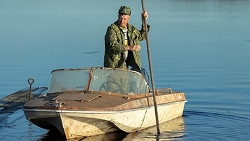IN 1878, MOHAMMED JAMALUL ALAM, Sultan of Sulu, leased or ceded the territory in the North East of the island of Boreno to Gustavus Baron de Overbeck and Alfred Dent. In consideration of the lease or cession [conflicting definition of the term ‘padjak’ by both sides], the Sultan was to received annually the sum of five thousand Straits dollars. In 1903, an additional three hundred dollars was agreed and added to the financial agreement.
In 1881, the British North Borneo Company was incorporated upon application to the British Crown by Overbeck and Dent and they became the administrators of North Borneo. Eventually, the territory became a British Protectorate. In 1946, its status was changed to a British Colony.
The official interest of the Philippines over the territory is said to have started in that year when its ambassador in London was directed to obtain copies of the agreement between the North Borneo Company and the British Crown concerning the transfer of the sovereign rights and assets of the chartered company to the British government. According to Leifer, the transfer of sovereign rights happened at the very time the Philippines was granted its independence by the United States of America. He added that the proclamation ‘marked an attempt [on the part of the British government] to forestall any claim [over Sabah] from the new government in Manila.’
Ambassador Armando Manalo regarded the British action as ‘an act of naked political aggrandizement in the widely discredited imperialist tradition.’ Former American governor-general of the Philippines Francis Burton Harrison, even described the annexation by the British as ‘political aggression.’ Harrison urged the Philippine government then to take action.
In the late 1950s, the Sultan of Sulu abrogated the 1878 Deed and he executed an Instrument ceding the territory of North Borneo to the Philippines. The situation was muddled when, in the early 1960s, the British government announced, through the government of Malaya, that the Borneo territories would be included in a new Federation of Malaysia.
The Philippine government protested and severed its diplomatic relations with Malaya and it withheld recognition of the Federation. The issue reached a stalemate when both countries adopted opposing views concerning their positions over the Sabah issue. Malaysia’s position is no claim, while the Philippines to bring the case to the International Court of Justice.
Ambassador Manalo said in the late 1960s: ‘Malaysia’s unyielding and inflexible stand on the Sabah issue suggests that perhaps the answers to these questions are not entirely favourable to it. In contrast to Malaysia’s obduracy, the Philippines has emphasized its willingness to try all peaceful means, in keeping with the Manila Accord in resolving a disagreement that already has raised discordant notes of tension in a corner of the world that can least afford conflict….’
This was the scenario when the Philippine government revived its interest over the Sabah claim. Will the present President Benigno Aquino, III, pursue the claim and make a decision similar to the Panatag and Spratly issues?
Michael Leifer observed that the government attitude to the case was clothed with ‘political improvisation’ as in previous government position on the issue.
In a paper delivered at a conference on the subject many years ago, Professor Rolando N. Quintos, a historian and scholar, said that the only way to break the deadlock between the Philippines and Malaysia on the Sabah claim is through a give and take approach. He said, ‘Let the Philippines be willing to accept the justice of the Malaysian appeal to self-determination and accept the final conclusion of the UN Secretary General of September 1963, if, in return, the Malaysians are willing to submit their purely legal claim of the Philippines in support of the proprietary rights of the Kiram heirs in Sabah to the World Court or to a mutually acceptable mediating body.’







Leave a Reply